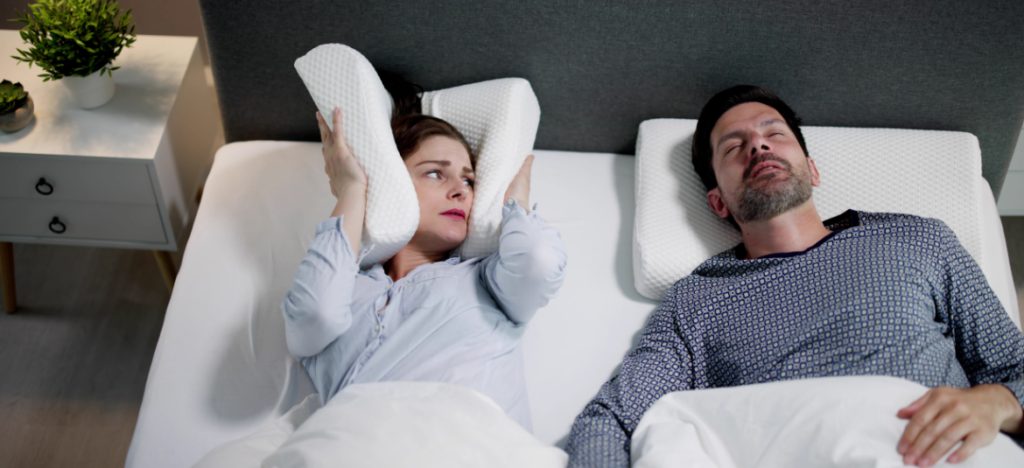Blogs

Understanding Upper Airway Resistance Syndrome - The Hidden Sleep Disorder
Introduction
Upper Airway Resistance Syndrome (UARS) is an important but frequently neglected sleep disorder that exists between primary snoring and obstructive sleep apnea in the range of sleep-related breathing issues. Although it impacts millions of people globally, UARS often remains undiagnosed, resulting in chronic fatigue, daytime drowsiness, and a range of other symptoms that can greatly affect one’s quality of life. It is essential for both healthcare professionals and patients to understand this condition in order to address their sleep-related difficulties effectively.
What is UARS?
Upper Airway Resistance Syndrome (UARS) happens when the airway narrows during sleep, leading to increased effort in breathing without a total blockage. Unlike sleep apnea, where breathing completely stops, UARS presents as subtle breathing challenges that can still greatly affect sleep quality. Dr. Christian Guilleminault and his team at Stanford University first described UARS in 1993, identifying it in patients who suffered from excessive daytime sleepiness but did not fulfill the criteria for sleep apnea. This important finding shed light on why some individuals with significant sleep issues had normal results in sleep studies.
Symptoms and Diagnosis
Individuals with UARS often face a variety of symptoms that can easily be confused with other health issues. Common complaints include persistent fatigue, frequent awakenings during the night, morning headaches, and trouble focusing. Many also experience cold extremities, digestive problems, and shifts in mood. Unlike sleep apnea, UARS typically affects younger, slimmer people and tends to lead to sleep fragmentation instead of complete pauses in breathing.
Diagnosing UARS involves a thorough approach, which includes a detailed sleep history, a physical exam, and specialized sleep studies that can identify subtle changes in breathing. A key diagnostic tool is Cone Beam Computed Tomography (CBCT), which provides detailed 3D imaging of the upper airway and helps identify anatomical restrictions that may contribute to UARS. Standard sleep studies might overlook UARS, so it’s crucial to collaborate with healthcare professionals, including airway-focused orthodontists, who understand this condition and have the right diagnostic tools at their disposal. These specialists can utilize CBCT scans to assess airway dimensions, identify potential obstruction points, and develop targeted treatment plans.
Treatment Approaches
UARS treatment has evolved significantly, with several effective options now available. One of the most promising developments in recent years has been the use of maxillofacial expansion techniques, particularly Maxillary Skeletal Expansion (MSE) and Rapid Maxillary Expansion (RME).
MSE represents a sophisticated approach to addressing the underlying anatomical factors contributing to UARS. This treatment uses a specialized orthodontic appliance anchored to the palate to gradually widen the upper jaw and nasal cavity. By creating controlled micro-fractures in the midpalatal suture, MSE increases the available airway space and improves breathing capacity. This approach is particularly effective for adolescents and young adults with narrow palates and breathing difficulties.
RME, while similar in principle to MSE, is typically used in children and younger adolescents when the palatal suture is more amenable to expansion. The treatment involves a custom-fitted palatal expander that gradually separates the palatal suture over 3-6 months. This expansion not only improves nasal breathing but can also address dental crowding and reduce UARS symptoms in suitable candidates.Oral appliances play another crucial role in UARS treatment in India.
Many patients benefit from a combination of treatments. For instance, some might undergo MSE or RME followed by maintenance therapy with an oral appliance. Others might combine expansion treatment with myofunctional therapy to optimize breathing patterns and muscle function. The key to successful treatment lies in tailoring the approach to each individual’s specific needs and anatomical considerations.
Living with UARS
Managing UARS involves a holistic approach that goes beyond just medical treatments. Good sleep hygiene, consistent exercise, and effective stress management are essential for controlling symptoms. It’s also important for patients to consider their sleep position, as some positions can exacerbate breathing issues. Regular check-ins with healthcare providers help ensure that the treatment stays effective and can be modified when necessary.
Conclusion
Upper Airway Resistance Syndrome is a complex yet treatable sleep disorder. The emergence of advanced treatments such as MSE, RME, and various oral appliances provides hope for individuals facing this condition. Achieving success in treating UARS relies on accurate diagnosis, the right choice of treatment, and ongoing follow-up care. With effective management, many patients can see significant enhancements in their sleep quality and overall health.
Gaining a clear understanding of UARS and its treatment options enables patients to make informed choices about their care. Whether opting for expansion techniques, oral appliances, or a combination of therapies, collaborating with knowledgeable healthcare providers who grasp the intricacies of UARS therapy is crucial. Although the path to improved sleep may demand patience and determination, the treatment options available present genuine hope for meaningful improvements in sleep quality and daily life.
